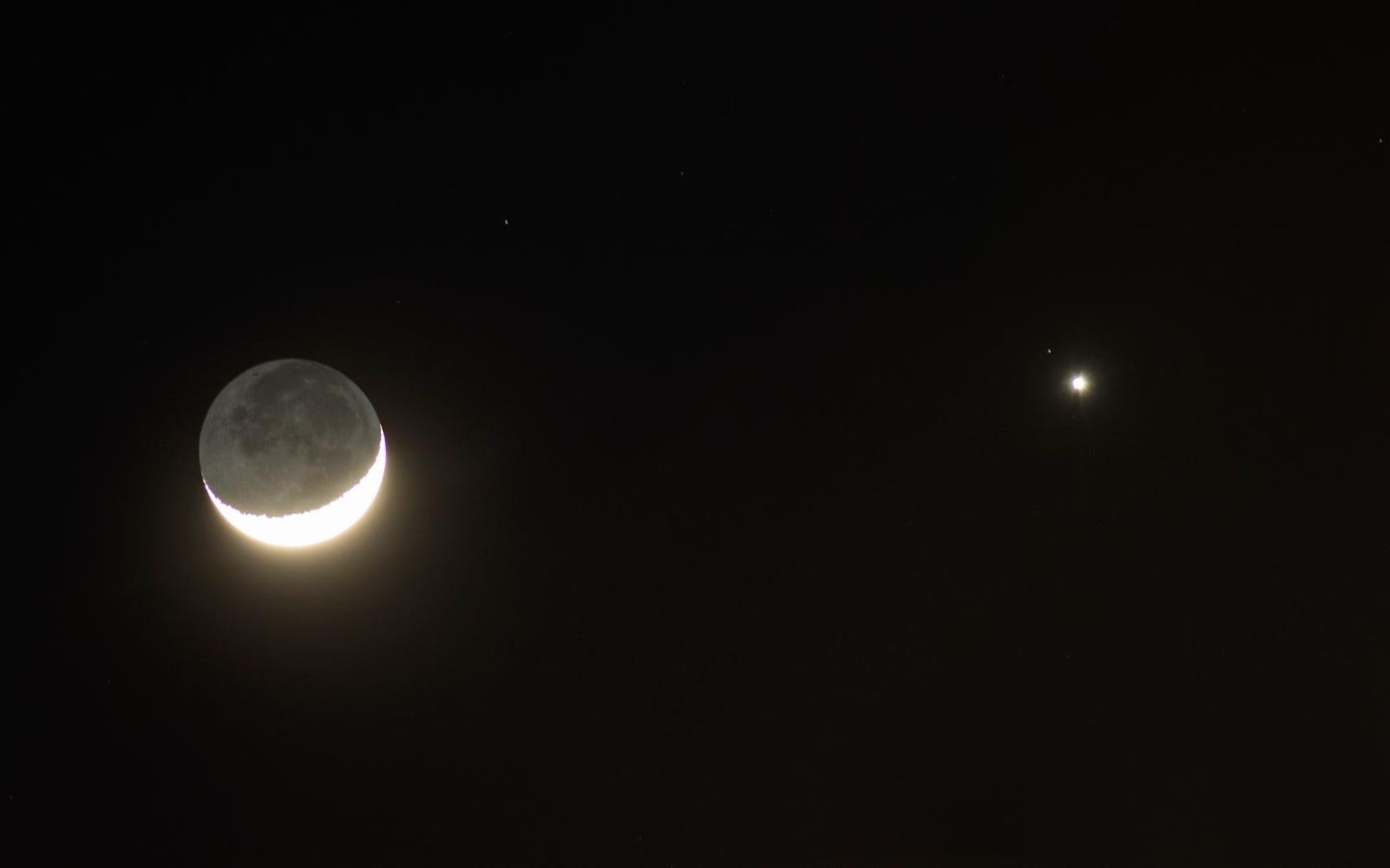A 15 percent illuminated waxing crescent moon sets in the sky next to the planet Venus on February … More
Early risers on Sunday, June 22, are in for a pre-dawn treat — a triangular arrangement of the waning crescent moon flanked by Venus and the Pleiades star cluster. The three most beautiful naked-eye sights to be had in the night sky will create a stunning panorama just before sunrise. Here’s everything you need to know about when and where to see them.
Where And When To Look
To catch this display, head outside about an hour before sunrise and look east. Venus, unmistakably bright at magnitude -4.2, will be shining beneath a 13%-lit waning crescent moon (over 30 times brighter than Venus). To the left of the pair will be the Pleiades (also known as the Seven Sisters and Messier 45), one of the closest open clusters of stars to the solar system.
What You’ll See
Aside from the brilliance of Venus and the dazzling twinkling stars of the Pleiades, look carefully at the moon’s darkened portion — its night side. Despite there being no direct sunlight upon it, it is faintly illuminated. That’s Earthshine or planet-shine, sunlight reflected from Earth’s oceans and clouds onto the moon. It will create a softly lit lunar disk above Venus — a beautiful sight!
The entire spectacle is, of course, a line-of-sight illusion — all three objects extremely far from each other. The moon is about 238,000 miles from Earth, Venus about 150 times farther and the Pleiades around 444 light-years away.
Sunday, June 22: Venus, A Crescent Moon And The Pleiades
Observing Tips
Forget all about a telescope. It’s what everyone immediately thinks of when they think about astronomy, and it’s very often completely irrelevant. You just need naked eyes for this sky event, though a pair of binoculars will enhance the view, especially if you want to appreciate the cluster of stars in the Pleiades and get a close-up of Earthshine on the moon.
More important is an observing location with a clear, unobstructed view to the eastern or western horizon, if possible away from city lights — though light pollution makes zero difference to the planets and the moon.
What’s Next In The Night Sky
If you’re up for another early outing, Monday, June 23, will see an even slimmer waning crescent moon closer to the Pleiades — just half a degree away — with Venus remaining nearby.
For exact timings, use a sunrise and sunset calculator for where you are, Stellarium Web for a sky chart and Night Sky Tonight: Visible Planets at Your Location for positions and rise/set times for planets.
Wishing you clear skies and wide eyes.









